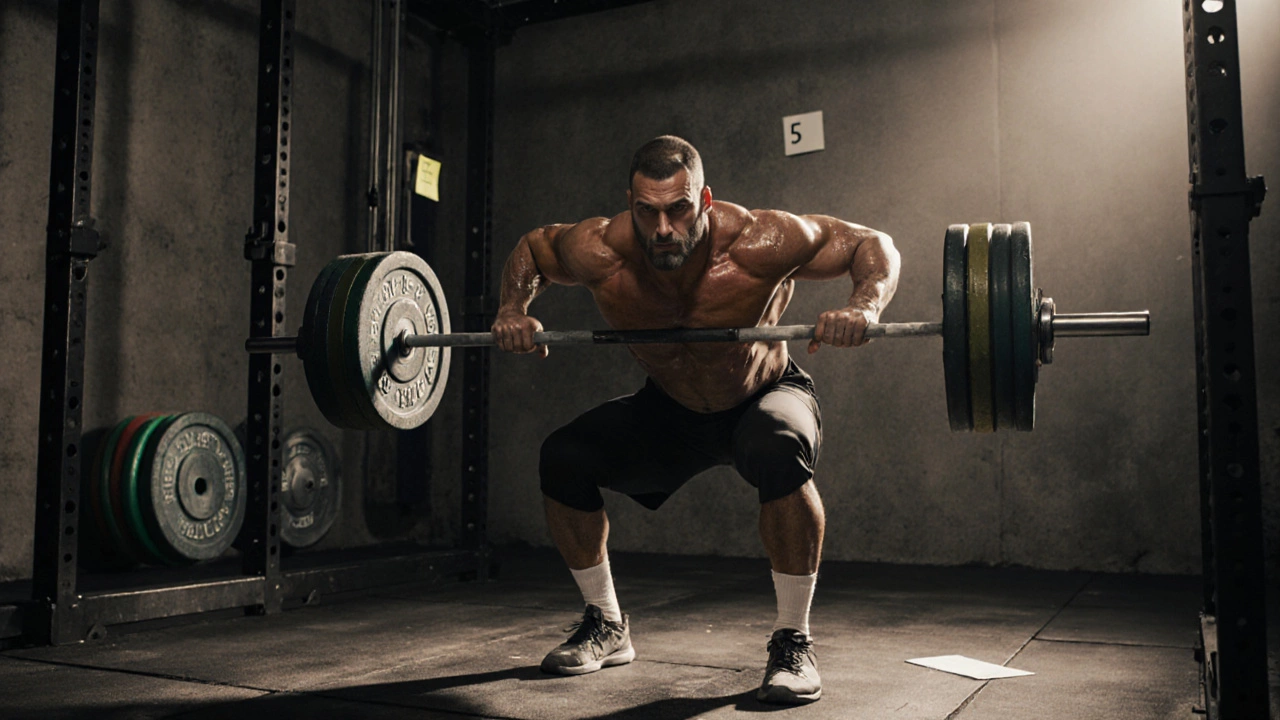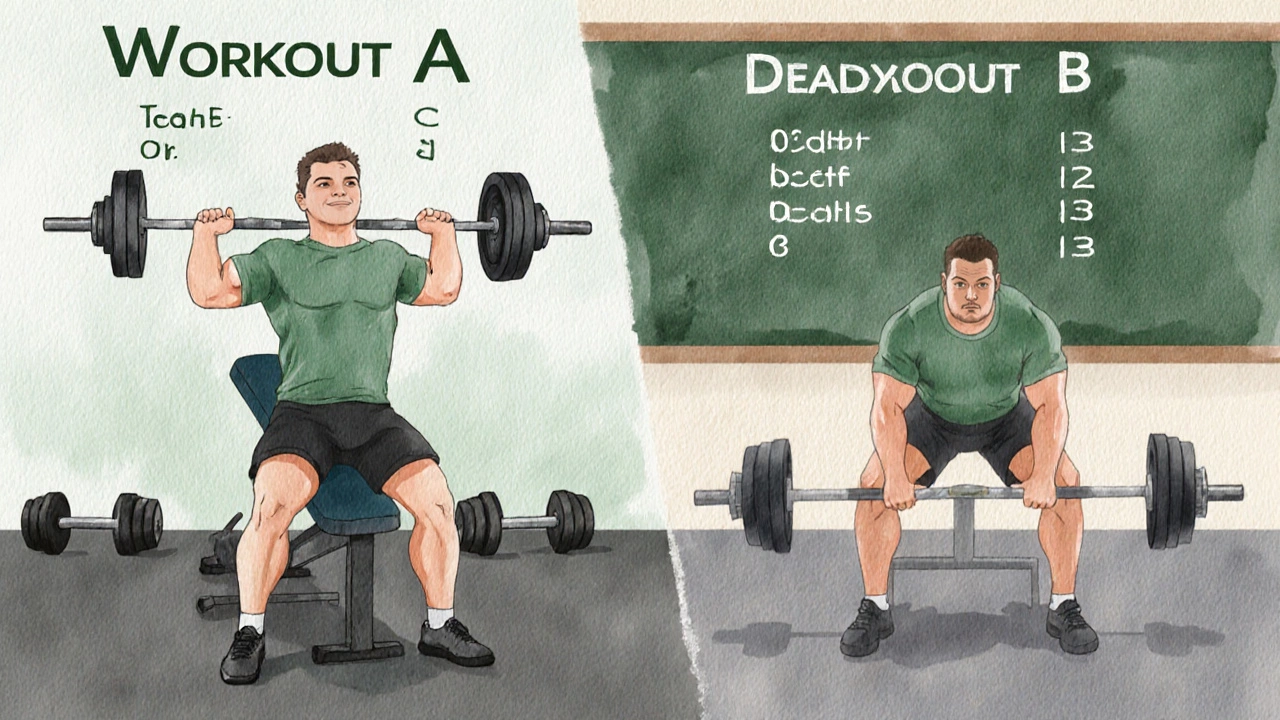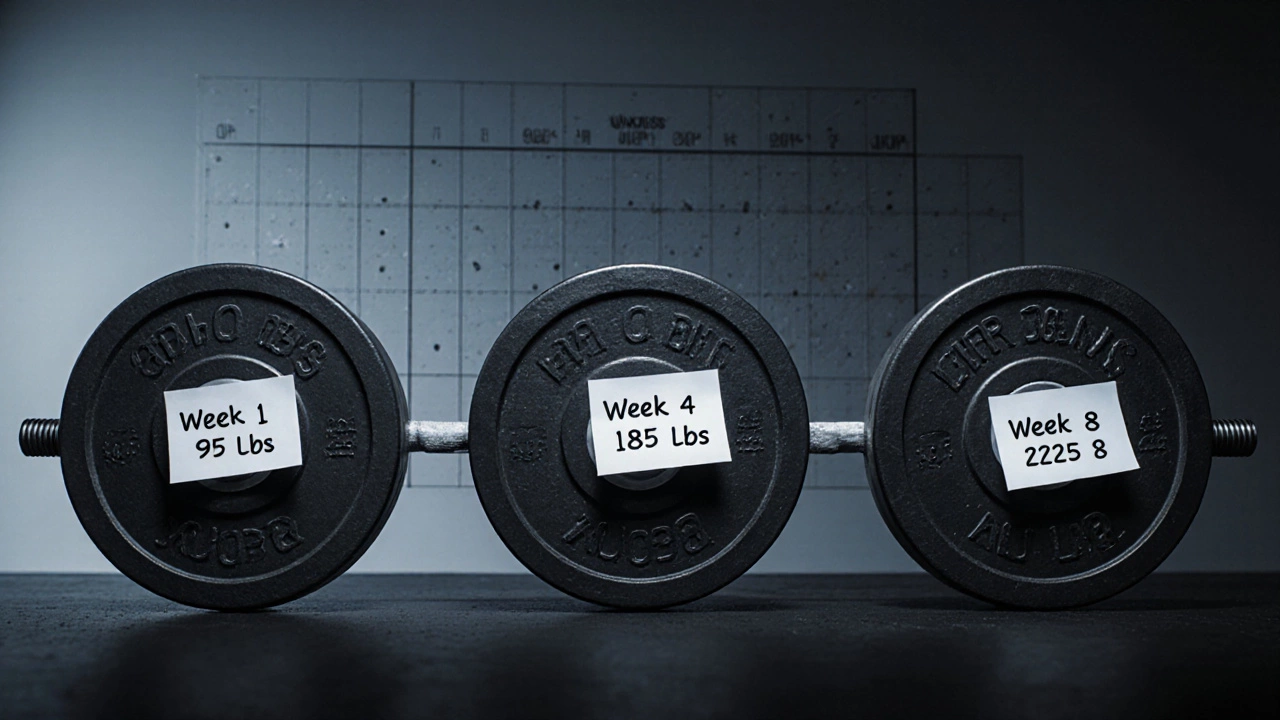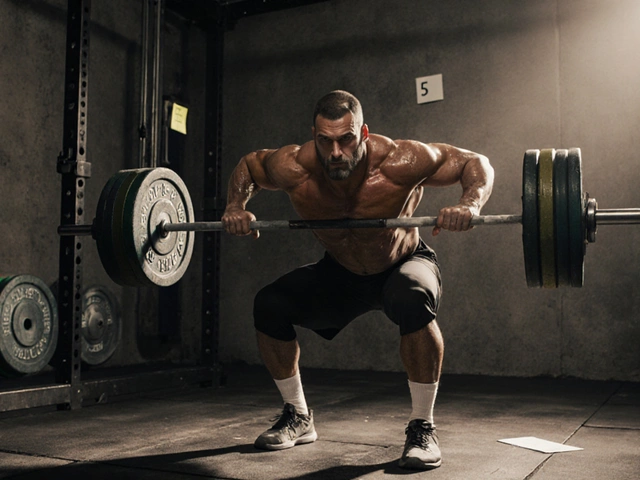
Gym Workouts October 28, 2025
What Does 5 5 Mean in Gym? Decoding Common Workout Notation
5x5 Weight Calculator
Calculate Your Starting Weight
Important: Never exceed 85% of your 1RM for 5x5 training. Adjust weight based on form, not ego.
Ever walked into the gym and seen someone scribbling "5 5" on a sticky note next to the barbell? Or heard a trainer shout "five by five" and wondered if it’s some secret code? It’s not. "5 5" in the gym simply means five sets of five reps. It’s one of the most straightforward, effective, and widely used training patterns in strength training - and if you’re not using it, you’re missing out.
What Exactly Is 5 5?
"5 5" stands for five sets of five repetitions. That’s it. You pick a weight, do five reps, rest, then do it again - four more times. No fancy math, no confusing terms. It’s clean, simple, and brutally effective for building strength.
This format isn’t new. It’s been used since the 1950s by Olympic lifters and powerlifters. Programs like StrongLifts 5x5 and Madcow’s 5x5 are built around this structure. The goal? Get stronger, not bigger. While bodybuilders chase high reps for muscle pump, 5x5 focuses on lifting heavier weights with perfect form over multiple sets.
Here’s how it looks in practice:
- Barbell Back Squat: 5 sets × 5 reps
- Barbell Bench Press: 5 sets × 5 reps
- Barbell Deadlift: 5 sets × 5 reps
- Overhead Press: 5 sets × 5 reps
- Barbell Row: 5 sets × 5 reps
You don’t need to do all five exercises every session. Most 5x5 programs split them across two or three days per week. For example, Workout A might include squats, bench press, and rows. Workout B might include squats, overhead press, and deadlifts. You alternate them, giving your body time to recover.
Why 5 Sets of 5? Why Not 3x10 or 10x10?
The magic of 5x5 lies in the balance between volume and intensity. Three reps is too heavy for most people to handle safely over multiple sets. Ten reps is too light to build serious strength. Five hits the sweet spot.
Five reps let you lift around 80-85% of your one-rep max - heavy enough to stimulate strength gains, but light enough to maintain good form and recover quickly. Five sets give you enough total work to trigger adaptation without overloading your nervous system.
Compare that to 10x10 (ten sets of ten reps). That’s a volume monster. Great for muscle endurance or hypertrophy, but terrible for strength. You’ll be exhausted after the third set. Your form will break down. You won’t get stronger - you’ll just get sore.
Or 3x10? That’s fine for beginners, but after a few months, you’ll plateau. Three sets just don’t give you enough stimulus to keep progressing when you’re lifting heavier weights. Five sets do.
Studies from the Journal of Strength and Conditioning Research show that 5x5 training leads to greater strength gains in novice and intermediate lifters compared to higher-rep protocols over 8-12 weeks. The reason? Consistent progressive overload with manageable fatigue.
Who Is 5 5 For?
5x5 is perfect for:
- Beginners who want to build a strong foundation
- Intermediate lifters stuck in a strength plateau
- Anyone who wants to get stronger without getting huge
- People with limited time - you can finish a full 5x5 workout in under an hour
It’s not ideal if you’re training for a marathon, a bodybuilding contest, or a sport that demands explosive speed. Those goals need different tools. But if you want to bench more, squat deeper, or press heavier, 5x5 is one of the best paths.
Take John, a 32-year-old office worker who started lifting six months ago. He was doing random machines and 3x12 routines. His squat stayed stuck at 135 lbs. He switched to a 5x5 program. After eight weeks, he hit 185 lbs on his squat. Not because he trained harder - because he trained smarter.

How to Start a 5x5 Program
Here’s a simple way to begin:
- Choose three compound lifts: squat, bench press, and deadlift.
- Start with a weight you can do for five clean reps with good form. If you’ve never done a barbell squat before, start with just the bar (45 lbs) or even lighter.
- Do five sets of five reps on each lift. Rest 2-3 minutes between sets.
- Add weight every workout. Even just 2.5-5 lbs per session. This is called progressive overload - the core principle of strength training.
- Train three days a week, non-consecutive. Example: Monday, Wednesday, Friday.
On your first workout, you might do:
- Barbell Back Squat: 5x5 @ 95 lbs
- Barbell Bench Press: 5x5 @ 85 lbs
- Barbell Row: 5x5 @ 95 lbs
Next workout, add 5 lbs to each lift. Keep going until you can’t complete all five reps with good form. Then, drop the weight by 10%, rest a week, and start again.
Common Mistakes People Make With 5x5
Even though it’s simple, people mess it up. Here are the top three:
- Adding too much weight too fast. You’re not trying to break records every session. If you miss two reps in a set, you went too heavy. Drop back 10% and rebuild.
- Skipping warm-ups. Five heavy sets demand a proper warm-up. Do 2-3 light sets before your working sets. Example: 1x10 @ 45 lbs, 1x5 @ 75 lbs, then 5x5 @ 105 lbs.
- Ignoring form. 5x5 isn’t a test of ego. If your back rounds on a deadlift or your knees cave in on a squat, stop. Strength without control leads to injury.
Also, don’t add extra exercises. The beauty of 5x5 is its simplicity. Don’t throw in bicep curls, leg extensions, or abs every day. Focus on the big lifts. You’ll get stronger faster.

What Comes After 5x5?
Most people hit a wall around 3-6 months. Your squat hits 225 lbs. Your bench hits 185. Progress slows. That’s normal. When that happens, you have options:
- Switch to a 3x5 or 4x5 program to reduce volume and focus on heavier weights.
- Try a 5/3/1 program - it builds on 5x5 but adds more variation.
- Go into a hypertrophy phase (8-12 reps) to build muscle, then return to 5x5 later.
You don’t need to abandon 5x5 forever. Many elite lifters cycle back to it every few months to reset and rebuild strength.
Final Thought: Strength Is a Skill
5x5 isn’t magic. It’s just consistent, deliberate practice. It’s showing up three times a week, adding five pounds, and trusting the process. No supplements. No gimmicks. Just you, the barbell, and the weight.
If you’ve been stuck in the same routine for months, if you’re tired of chasing pumps instead of progress, give 5x5 a shot. It’s the oldest, most proven method for getting stronger - and it still works better than 90% of the trendy programs you see online.
Five sets. Five reps. Five days a week. That’s all you need to start.
Is 5 5 the same as 5x5?
Yes, "5 5" and "5x5" mean the same thing: five sets of five repetitions. The "x" is just shorthand. Some people write it as "5-5", "5 by 5", or "5x5" - all are used interchangeably in gyms.
Can I do 5 5 every day?
No. 5x5 is intense. Lifting heavy five sets of five reps puts major stress on your nervous system and muscles. You need at least 48 hours of rest between sessions targeting the same muscle groups. Most people do 5x5 three times a week, with rest days in between.
Do I need to do all five exercises in one workout?
No. Most 5x5 programs split the lifts across two workouts. For example, Workout A: Squat, Bench, Row. Workout B: Squat, Overhead Press, Deadlift. You alternate them. This lets you recover better and lift heavier.
How long should I rest between sets in a 5 5 workout?
Rest 2 to 3 minutes between sets. This gives your muscles and nervous system time to recover enough to lift heavy again. Shorter rests (under 90 seconds) will make the workout harder but reduce the weight you can lift - which defeats the purpose of 5x5.
Will 5 5 make me bulky?
Not necessarily. 5x5 builds strength and some muscle, but not bulk. To get big, you need high volume, high calories, and specific training styles. 5x5 focuses on lifting heavier, not more reps. You’ll get leaner and stronger, not necessarily bigger.




